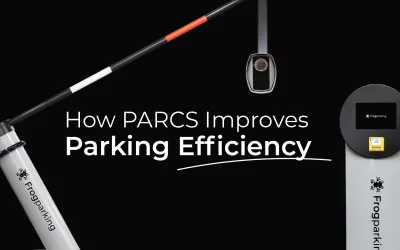Parking Garage Technology and IoT – what’s all the buzz?
Parking garage technology can no longer be ignored. I think we can all agree that finding a parking space these days is stressful, with more drivers, less parking spaces and limited places to build new parking areas.
Firstly, why do we need IoT parking garage technology?
There is no denying that traffic is on the rise, with more vehicles per household than ever before. With many cities, the public transport options are either defunct, not accessible and in some cases, simply not available yet. This results in more vehicles on the roads, and in turn, looking to utilize parking garages.
It highlights the need for Internet of Things (IoT)-powered parking systems to ease traffic congestion and reduce the unpredictability of parking availability.
With an abundance of connected devices emerging, developing an IoT-based smart parking system is now more feasible (in terms of parking garage technology). An IoT smart parking system not only eases congestion, but moreover, provides incredible data and insights on your valuable parking facility.
What are the major issues within the industry currently?
Research indicates that on average, drivers spend between 3.5 to 14 minutes searching for parking spaces. As I am sure we can all relate to, impatience leads to drivers resorting to illegal parking, leading to hefty fines and further frustration from other drivers. In densely populated cities, this search time translates to a loss of around 470 to 1870 hours annually.
The need to either to reduce car ownership or to leverage IoT technology to optimize parking is evident. The latter seems ideal as smart parking solutions gain popularity, addressing the following problems:
- Overcrowded parking areas: A key issue is that there are more vehicles than free parking spots, which results in traffic congestion
- Illegal parking and inaccurate utilization: As a result of the above, we see drivers parking illegally or outside designated areas, which further increases congestion and doesn’t encourage churn, therefore leaving inadequate parking spaces for other drivers
- Environment and Co2 issues: Searching for parking consumes a significant amount of fuel and increases carbon emissions. Additionally, in outdoor parking areas, rain can wash pollutants from parking lots into the environment, creating dirty runoff and odors
- Poor customer experience: Drivers often estimate their parking duration leading to overpayment, get frustrated searching for that elusive parking spot and generally a lack of cohesion within the parking experience
Utilizing IoT parking garage technology for smart parking systems offers a solution to many common parking issues. These innovations optimize parking space utilization, reduce environmental impact, and streamline the parking process for drivers, ultimately making urban living more manageable and sustainable.
What is parking garage technology that uses IoT?
An IoT-based smart parking system is a centralized parking management solution that enables drivers to have a more streamlined, efficient and positive experience.
For example, by using their smart phones to search for free parking, and reserve a parking spot, all before they have even left their home. It’s hugely time savings, it’s easy and convenient and significantly reduces traffic congestion.
Another example includes the use of parking garage technology hardware, like parking guidance sensors, to detect available parking spaces. Furthermore, communicates this information to drivers in real time. Sometimes this is referred to as a parking guidance system, sometimes simply parking guidance. In other words, drivers don’t have to worry about finding a free parking space, as it’s already booked, and allows for a better customer experience.
Additionally, parking garage technology can essentially “talk” to the connected devices send alerts about peak times and surcharges, helping drivers avoid parking struggles and unexpected costs.
Smart parking technology maximizes the use of existing parking spaces, increases the efficiency of parking operations, and facilitates easier traffic flow with just a few taps on a parking mobile application.
These solutions give drivers complete control of their journey, eliminating the need to hunt for parking and reducing travel time and costs. IoT forms the foundation for real-time data collection and analysis, connecting a variety of devices and sensors in the parking ecosystem to optimize operations.
The future of smart parking lies in integrating IoT with autonomous vehicles, which would free up even more road space and improve mobility.
What types of IoT-based smart parking architecture is available as parking garage technology?
Smart parking management systems based on IoT typically follow a layered architecture consisting of several components:
- User mobile parking application and web interfaces: This is the user-facing parking software technology. Drivers use the parking mobile app to find parking, while parking managers use the web interface to monitor and manage the system
- Cloud platform: This central platform stores and processes all the data collected from the parking guidance sensors. It performs real-time analysis and provides the necessary information to the user interfaces
- Gateways: These devices collect the data from the sensors in the parking lot. It may perform preliminary processing and routing of the data before sending it to the cloud/web interface
- Sensors: Either indoor or outdoor sensors, installed in parking areas, these sensors detect vehicle presence using multi-detection methods.
The layered architecture of an IoT-based smart parking system allows for instant scalability using modular components. It is so flexible that each layer can be independently added without affecting the entire system. It is actually kind of beautiful.
Stay posted as we dive into the benefits and application of IoT within parking garage technology in an upcoming post.



